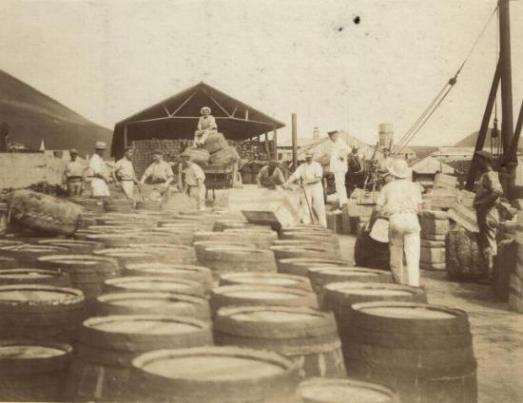Ascension Island is part of the United Kingdom Overseas Territory of St Helena, Ascension, and Tristan da Cunha. The territory is presided over by a Governor who is resident in St Helena and appointed by HM the King. The Governor is represented in Ascension by the Administrator. A revised Constitution entered into force in September 2009. An elected Island Council advises the Governor on laws, policies and the government’s annual budget.
Ascension, like other Overseas Territories and the Crown Territories, is not part of the United Kingdom. It has its own Constitution (shared with St Helena and Tristan da Cunha), is internally self-governing, makes its own laws, has a separate fiscal jurisdiction and has tax raising powers through the Governor. The United Kingdom is responsible for the defence, international relations, and internal security of the territory.
Unlike most places however there is no indigenous or permanent population. The inhabitants of the island comprise the employees of the organisations operating in the territory and their families.
Location: Ascension Island lies in the South Atlantic (7 56’S, 14 22’W) 1300km northwest of the island of St Helena and covers an area of 88km2.
Climate: The climate is sub-tropical with temperatures ranging from 20°C to 38°C. Showers occur throughout the year with slightly heavier rains in the January to April period.
Terrain: The island is volcanic, and its lower slopes and western side are made up of volcanic ash with little vegetation. Green Mountain, which rises to a height of 859m at the centre of the island, is lush and green.
Ascension Island was discovered by the Portuguese seafarer João da Nova in 1501, and was initially named Conception, before being rediscovered two years later in 1503 on Ascension Day by Alphonse d’Albuquerque, who gave the island its lasting name. Being dry and barren it was of little use to the East Indies fleets and went unsettled.
It remained uninhabited until Emperor Napoleon I was incarcerated on St Helena in 1815 when a small British naval garrison was stationed on Ascension to deny it to the French.The island was designated HMS Ascension, a “Stone Sloop of War of the Smaller Class”.

By Napoleon’s death in 1821 Ascension had become a victualling station and sanatorium for West Africa Squadron ships engaged in the suppression of the slave trade around the West African coast.
In 1823 the island was taken over by the Royal Marines. It remained under the supervision of the British Board of Admiralty until 1922, when it was made a Dependency of St Helena by Royal Letters Patent.
It ceased to be a military only island in 1899 when the Eastern Telegraph Company arrived and established a mid-Atlantic communications hub. From 1922 until 1964 the island was managed by the Eastern Telegraph Company, which was renamed Cable and Wireless in 1934.
In 1964, in view of plans to establish BBC and Composite Signals Organisation stations, an Administrator was appointed by the UK Government. During the Second World War the St Helena Government was similarly represented on the island.
During the Second World War the United States Government, by arrangement with His Majesty’s Government, developed Wideawake Airfield. From July 1942 to the end of the war in 1945 US planes transited Ascension Island destined for the North African, Middle Eastern and European theatres of war .
In 1957 a US presence was re-established, the airfield was enlarged and is now also the southeast tracking station of the USAF Eastern Test Range. In 1967 a NASA tracking station was built and supported the Apollo lunar landing programme. Although this station has since closed down NASA operations such as the Space Shuttle continued to be supported from Ascension by the USAF until it was taken out of service.
In 1982 the Island supported operations in the Falkland Islands and a RAF detachment continues to operate on the island in support of the Falklands garrison.